


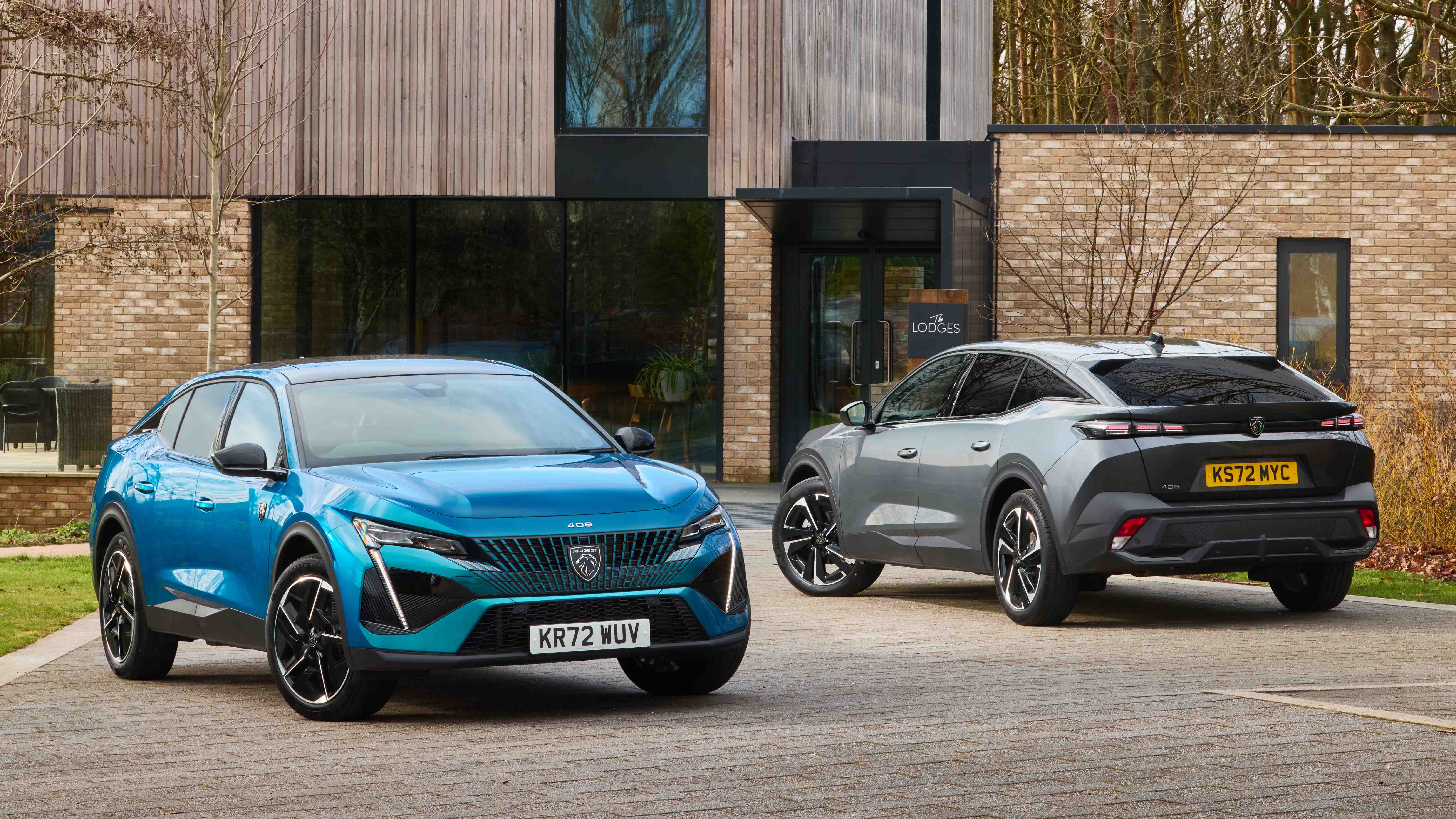
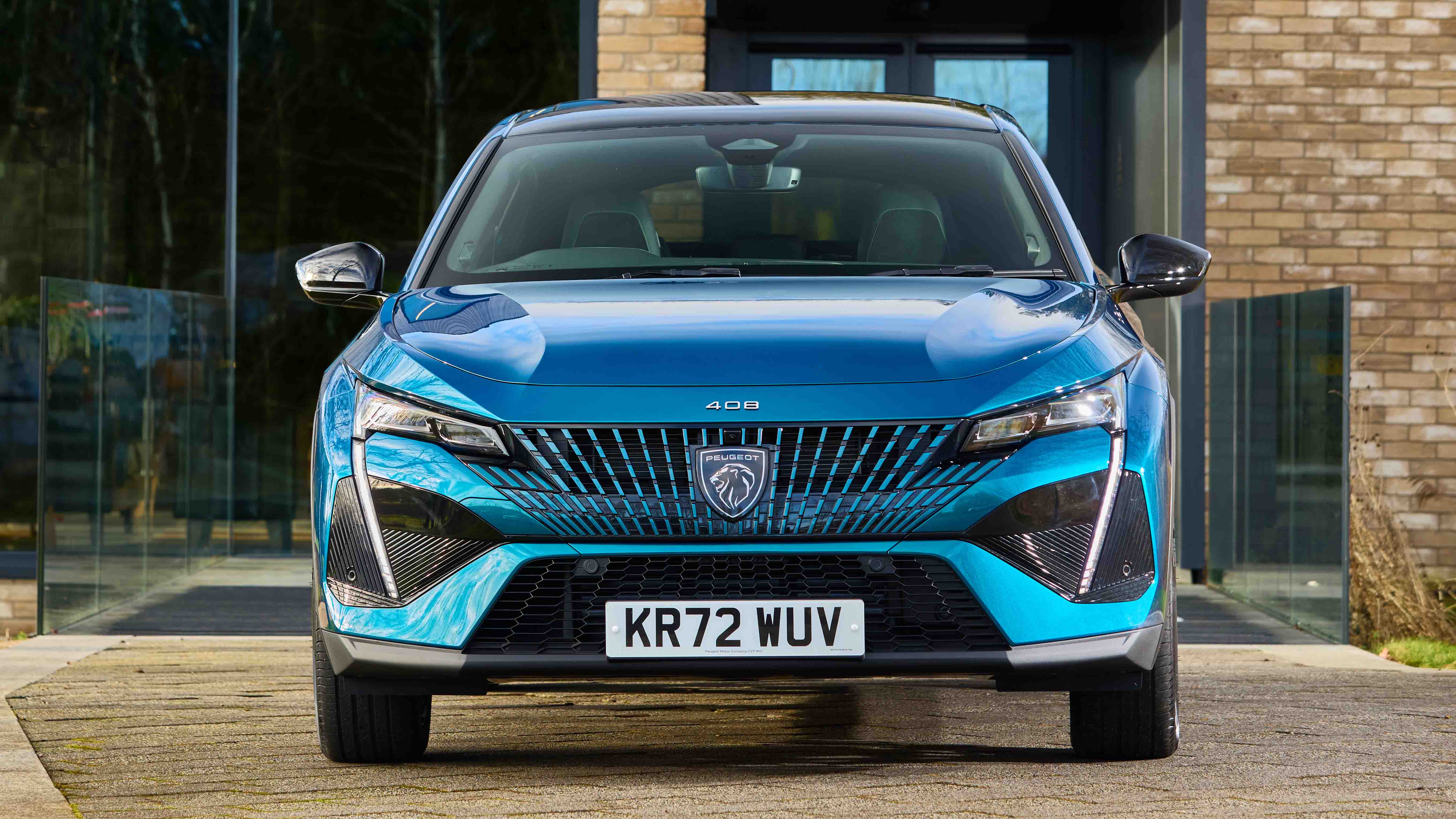


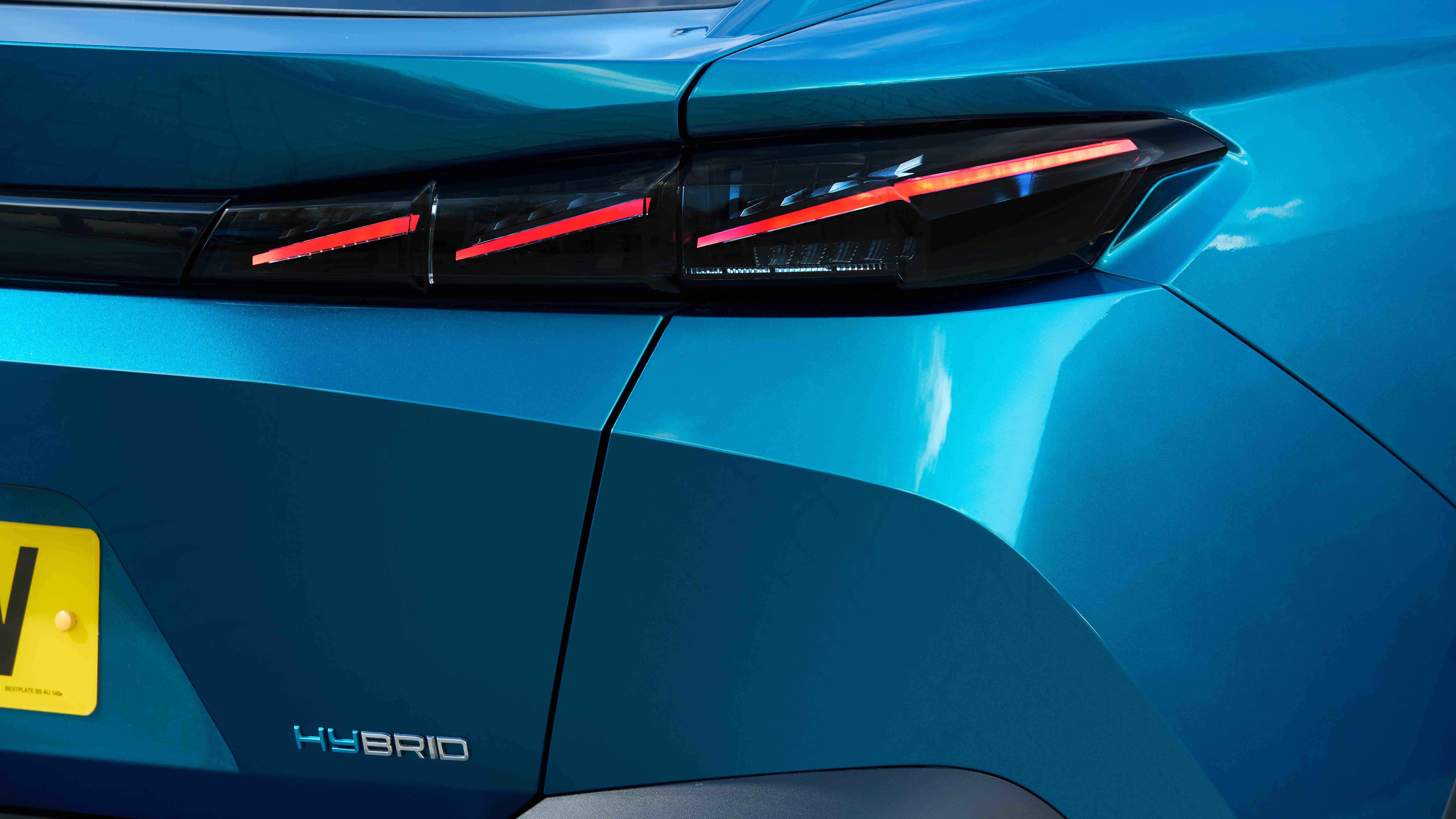
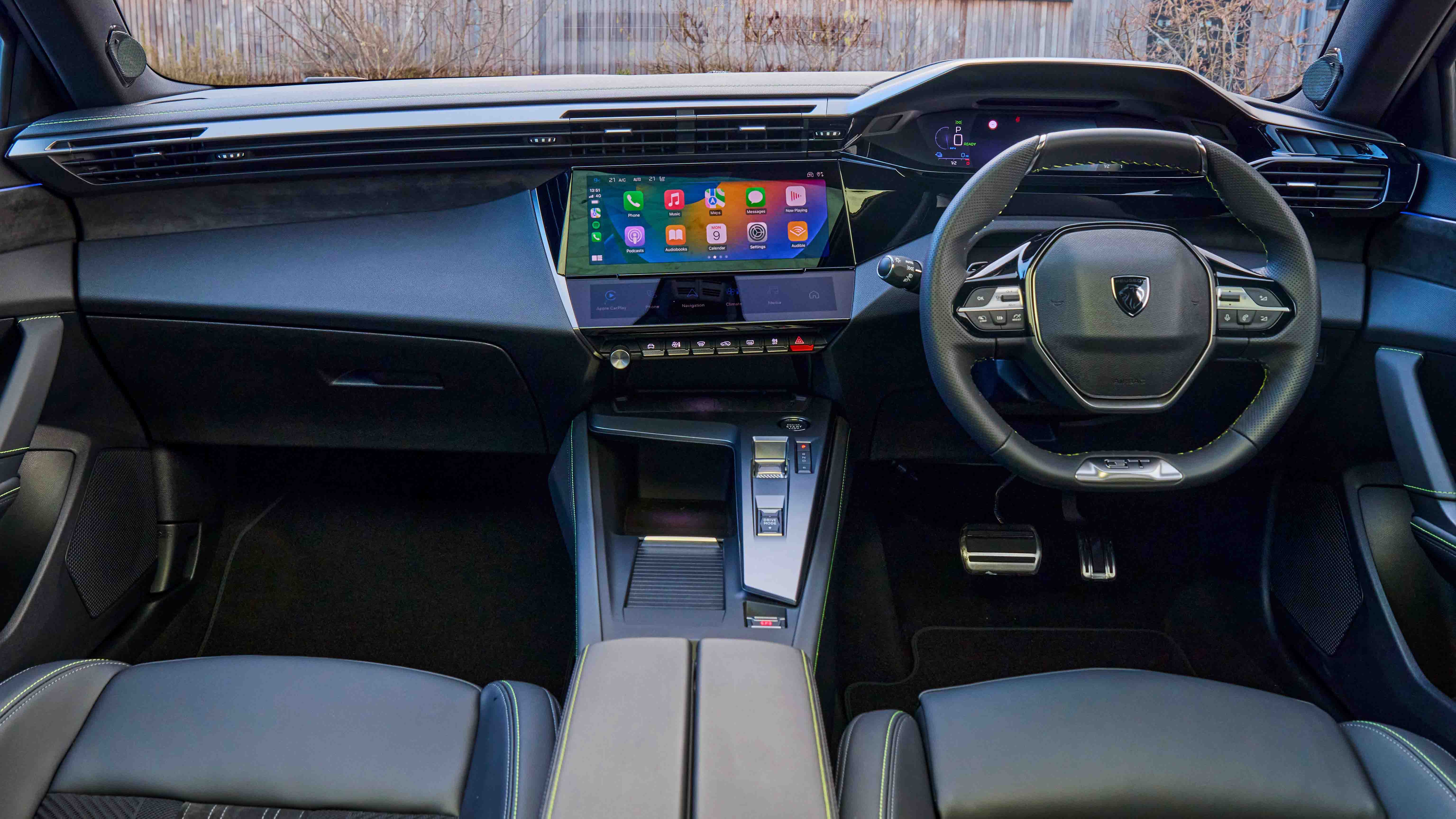
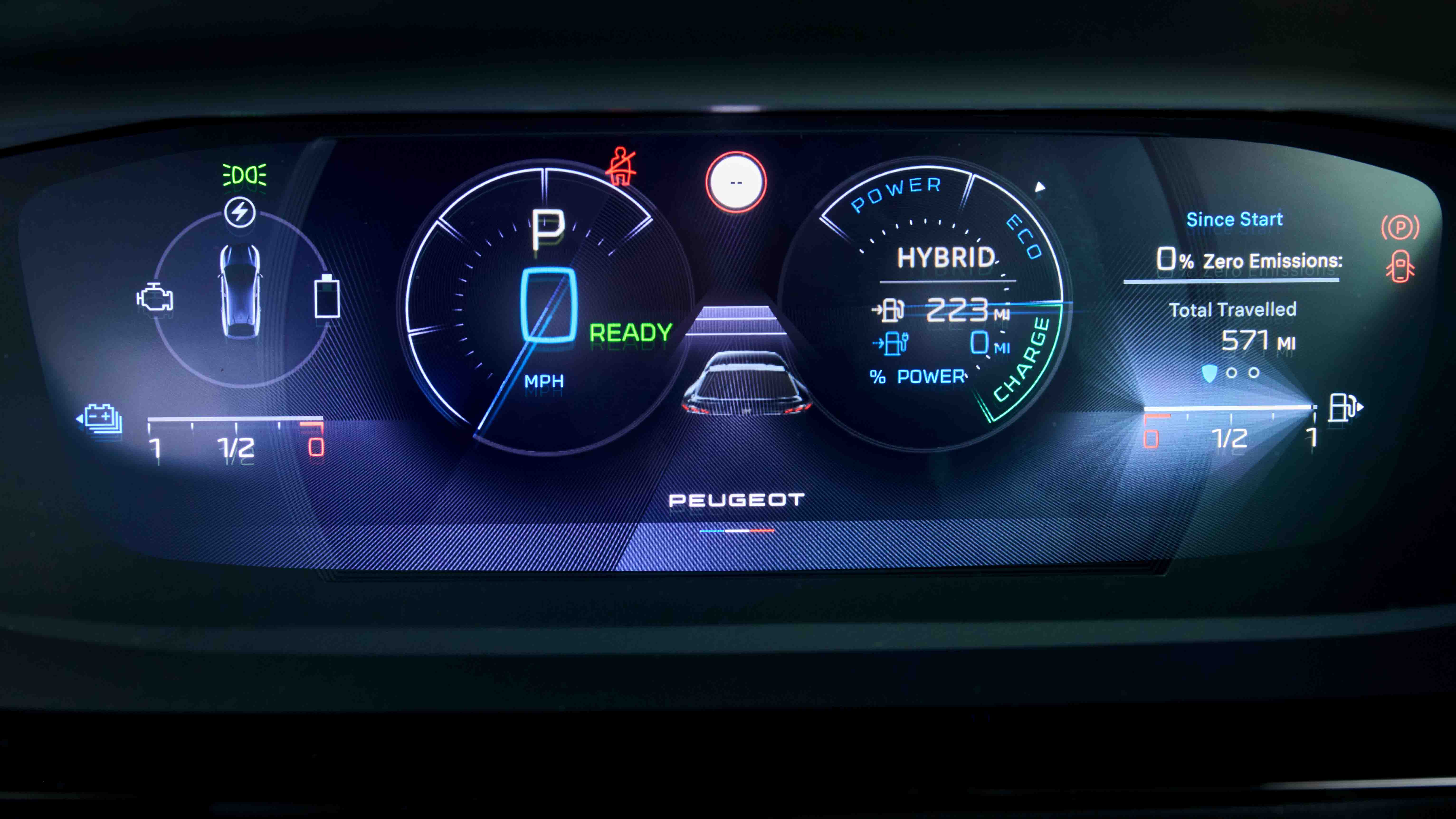

Peugeot 408 Review
The Peugeot 408 blends SUV, saloon, coupe and hatchback styling cues with surprising success, and ends up offering plenty of plus points with very few negatives.
It’s available with petrol and hybrid engines, including a talented plug-in hybrid, and a fully electric model is on the way as well.
- Configurable and responsive touchscreen
- Fun to drive and comfortable
- Comprehensively equipped
- Automatic gearbox can be jerky
- Firm ride in town
- No rear wiper
Should I buy a Peugeot 408?
Is… that a Lamborghini? If you squint a bit, you might mistake the car in our pictures for a Lamborghini Urus but, no, this is a Peugeot 408. The French brand has been drinking the styling sauce for a few years now, with everything from the 208 supermini to the 5008 seven-seat SUV gaining a pair of fangs and a more confident appearance than any rival you care to mention.
We love the out-there looks of the 408, but we can totally see if you think it looks busy and over-styled. It really stands out in the metal – even more so than in the pictures – and is available in some gloriously non-monochrome colours. But is it too bold for UK tastes?
Hopefully not, as the 408 is as good to live with as it is to look at. Its negatives are strongly outweighed by its positives, and it makes a surprisingly excellent family car. You might think its sloping roof makes it much less practical than the 3008 SUV, but that’s not the case as we’ll cover in the Practicality section below.
Interior and technology
Peugeot’s interiors have been a high point in recent years, and the 408 certainly doesn’t let the side down. It’s largely the same as in the 308, with tactile materials across the dashboard, smart upholstery and tightly stitched leather in thoughtfully placed areas. The standard-fit ambient lighting helps boost the premium feel, as does the build quality – it feels solid throughout and our test car didn’t creak or rattle at all.

The layout of the dashboard might initially seem a little strange if you’re not used to Peugeots, with a small steering wheel and a high-set digital instrument cluster. You quickly get used to the layout, which means you don’t need to look down from the road to see important info, and the majority of drivers should find a position where the dials are unobstructed.
While the digital dash display is pretty impressive, we’re even more taken by the updated 10-inch touchscreen, and its accompanying secondary touchscreen. The icons on the lower screen – the i-Toggle controls, as Peugeot calls them – are configurable to your preferences, and so’s the home screen menu on the screen above. That means you can have always-there shortcuts to your favourite radio stations and most-used functions at your fingertips.
The screen is quick to respond to prods and swipes, it looks sharp and we haven’t experienced any electrical glitches during our time with the 408.

Two trim levels are available – Allure and the top-spec GT model. Allure models get 19-inch bi-colour alloy wheels, high-beam assist, tinted side windows, a reversing camera, keyless entry and advanced emergency brake assist.
GT is marked out by fancier LED lights at both ends and a body-coloured grille, as well as adding heated seats, a heated steering wheel and a powered tailgate. A Focal premium sound system is optional on GT, as are a panoramic sunroof, a night vision system and some particularly striking 20-inch alloys.
Practicality
At 4.7 metres long, the 408 is longer than both the 308 estate and the 5008 SUV. It’s actually a little shorter than Peugeot’s other large family car, the 508, but the 408 manages to be more practical. In fact, given that it looks like a chunky saloon car, the 408’s practicality is very impressive.
The 408’s shape is deceiving. Look closely and you’ll see that the roofline only really starts sloping behind the rear doors. So, while you’d get even more headroom in a conventional SUV, there’s enough headroom in the 408 that even six-foot-tall adults should be able to get comfy. Legroom is great, and rear-seat passengers get big door bins, map pockets, a fold-down armrest and a couple of USBs.

Unlike other Peugeots – including the cheaper 2008 SUV – you don’t get the option of three sets of Isofix points. There’s just two on the outer rear seats, and accessing them is a little more fiddly than it needs to be.
Similarly, we’d appreciate a rear wiper. It’s a seemingly trivial thing, but the 408’s rear visibility quickly diminishes in poor weather. A rear-view camera is standard – a 360º one is optional – but these cameras will also get dirty.
Back to the good stuff – the boot is really big. The 536-litre space is bigger than even the 508 SW estate when measured to the parcel shelf. The 408’s shape means the loadbay is long and not too shallow, so it’ll easily swallow all sorts of family clutter or a few bulky boxes. It’s hatchback tailgate lifts with the rear window, so the boot opening is big. Loading heavy items may be a bit of a struggle with the high load lip, however.
You’ll lose a little bit of space by choosing the plug-in hybrid engine, but the remaining 471 litres is about 125 more than the Cupra Formentor eHybrid. Choosing the Focal stereo also reduces boot space by about 25 litres with the added subwoofer. Flip the seats down and you’ve up to 1,611 litres to fill if you’re happy to load to the roof.
Engines and performance
Kicking off proceedings is a 1.2-litre turbo petrol with 130hp, which might not sound powerful enough for a big, rakish car. It may be the least quick option but it’s still more than enough for any normal driving situation. You’ll also see mid-forties MPG from this engine, which is good enough, and it’s the cheapest version to buy and insure.

Next up is a hybrid, which also has a 1.2-litre engine – plus a 22hp electric motor integrated into the six-speed automatic gearbox. It’s only 6hp more powerful than the standard 1.2 and only marginally quicker off the line, but it’s more economical – you’ll see between 48mpg and 58mpg, depending on your driving style.
Topping the range is a plug-in hybrid, with either 180hp or 225hp and an eight-speed auto. The figures are fairly impressive – both versions will hit 0-62mph in around eight seconds, will manage more than 200mpg if you recharge often, and offer 34 miles of electric-only driving range. The PHEVs are more expensive to buy, but can offer lower running costs, they have the longest service intervals and have an eight-year warranty that covers the battery.
As with the vast majority of the rest of the Peugeot range, a fully electric model is on the way.
Driving and comfort
Sporty and comfortable – it’s a hard brief to hit because those two aspects are often mutually exclusive. For the most part, the 408 delivers.

It’s soft and quiet on the motorway – until you have to go uphill and the 1.2-litre petrol gets a little shouty – but on tight, winding roads its quick steering makes for an enjoyable experience. On cambered and undulating roads, the 408 flows really nicely. Long journeys are delightful, regardless of the makeup of the roads you’re on.
The base 1.2 is a smidge more fun on curving roads than the plug-in hybrid, which is 300kg heavier and rolls a little more through corners.
On urban streets, the ride feels a little busy as the 408 doesn’t completely manage to nullify pot holes and doesn’t smooth out stop-start traffic. Actually, the stop-start system is the main weakness of the 1.2 petrol, as it can be jerky and slow to disengage. But the same is true of most Peugeot, Citroen and Vauxhall cars with this setup, so it’s harsh to single out the 408.

















































